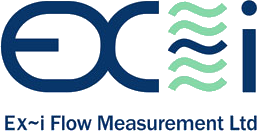As New Year’s Eve fireworks were lighting up the night sky, operators working in the marine fuel industry were already facing up to the first major challenge of 2015.
Just after midnight on 1st January the new sulphur regulatory regime came into force, introducing strict new limits on the sulphur content of bunker fuel within Emission Control Areas in North American, Baltic and Northern European waters. Enforcing the new limitation – 0.1% by weight or lower – will be key if a fair competitive environment is to be maintained.
The high cost of bunker fuel, rather than its content, has long been the particular cause of concern for the shipping industry. But for the foreseeable future operators look set to benefit from the decline in crude oil prices that began in 2014. Prices slumped yet again at the start of the first week of trading in 2015.
Turning to the outlook for mass flow metering, the effects of the decision by the Marine Port Authority of Singapore to introduce the mandatory use of a mass flow meter for deliveries of marine fuel are already being felt despite now coming into force for another two years (from 1st January 2017). As of 1st January this year, operators of new bunker tankers seeking a harbour craft licence must be equipped with an approved Mass Flow Metering System.
The Authority’s decision comes as the push to improve quality standards and the stamp out unethical practices builds momentum. At the Hamburg convention of the International Bunker Industry Association (IBIA) at the end of 2014, a workshop was held to explain the implementation of the mandatory use of meters. The convention had gathered against a backdrop of concerns about the transparency of the industry, with IBIA Chairman Jens Maul Jørgensen expressing concern over a lack of respect for ISO standards and advocating firm rules to replace voluntary agreements.
Finally, 2015 also heralds a new era in super-size vessels. The first in a batch of five ordered by Chinese operator CSCL from South Korea’s Hyundai Heavy Industries set out on its maiden voyage from Shanghai to Europe last month, arriving at Felixstowe in early January. Carrying around 19,000 standard containers, it has overtaken Maersk’s Triple-E (which has a capacity of around 18,000 containers) to become the world’s largest container ship.
If you need help navigating any challenges 2015 may bring, please contact the Ex~i Flow team on 01243 554920.
